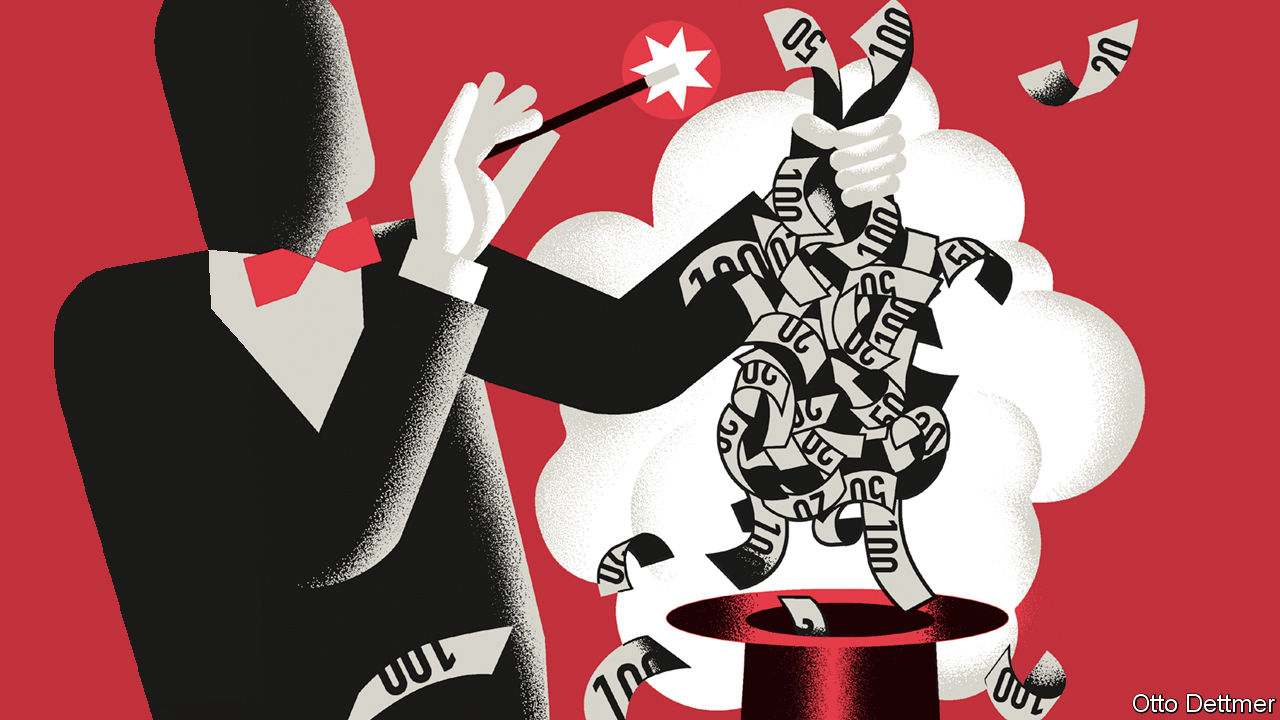Some eminent economists think the former


Modern Monetary Theory sounds like the subject of a lecture destined to put undergraduates to sleep. But among macroeconomists mmt is far from soporific. Stephanie Kelton, a leading mmt scholar at Stony Brook University, has advised Bernie Sanders, a senator and presidential candidate. Congresswoman Alexandria Ocasio-Cortez, a young flag-bearer of the American left, cites mmt when asked how she plans to pay for a Green New Deal. As mmt’s political stock has risen, so has the temperature of debate about it. Paul Krugman, a Nobel prizewinner and newspaper columnist, recently complained that its devotees engage in “Calvinball” (a game in the comic strip “Calvin and Hobbes” in which players may change the rules on a whim). Larry Summers, a former treasury secretary now at Harvard University, recently called mmt the new “voodoo economics”, an insult formerly reserved for the notion that tax cuts pay for themselves. These arguments are loud, sprawling and difficult to weigh up. They also speak volumes about macroeconomics.
mmt has its roots in deep doctrinal fissures. In the decades after the Depression economists argued, sometimes bitterly, over how to build on the ideas of John Maynard Keynes, macroeconomics’ founding intellect. In the end, a mathematised, American strain of Keynesianism became dominant, while other variants were lumped into the category of “post-Keynesianism”: an eclectic mix of ideas consigned to the heterodox fringe. In the 1990s a number of like-minded thinkers drew on post-Keynesian ideas in fleshing out the perspective embodied in mmt.
That perspective is not always clear; there is no canonical mmtmodel. But there are some central ideas. A government that prints and borrows in its own currency cannot be forced to default, since it can always create money to pay creditors. New money can also pay for government spending; tax revenues are unnecessary. Governments, furthermore, should use their budgets to manage demand and maintain full employment (tasks now assigned to monetary policy, set by central banks). The main constraint on government spending is not the mood of the bond market, but the availability of underused resources, like jobless workers. Raising spending when the economy is already at capacity can lead to rapid inflation. The purpose of taxes, then, is to keep inflation in check. Spending is the accelerator, taxation the brakes. Fiscal deficits are irrelevant as long as unemployment is low and prices are stable.
To those versed in orthodoxy—in which governments must eventually pay for their spending through taxes—these ideas sound bizarre. This strangeness is partly a result of mmt scholars’ unconventional idiom. Speaking with mmt’s adherents is sometimes like watching a football match with friends who insist the ball remains stationary while every other element in the game, including the pitch and goalposts, moves around it. Communication is made harder still by mmters’ sparse use of mathematical models. To economists who consider heavy-duty maths a mark of seriousness, such reluctance to use equations is either evidence of intellectual inferiority or a way of avoiding scrutiny.
It may instead reflect the fact that mmt is less a rival theory than a qualitative critique. Yes, central banks can use interest rates to achieve full employment, if rates are not too close to zero. But mmters think governments are better equipped. Monetary policy works via banks and financial markets, but when markets panic, this mechanism is weakened. Rate cuts stimulate the economy by encouraging firms and households to borrow, but that can engender risky levels of private-sector debt. Government spending sidesteps these problems. Similarly, rate rises can slow inflation. But they often work by inducing indiscriminate involuntary unemployment. The state could instead tame an unruly boom, mmters argue, by breaking up monopolies—thus loosening supply constraints—or by aiming tax increases at fossil-fuel firms.
Economists recognise that their models have shortcomings, and that monetary policy is not all-powerful. But most economists have long held that macroeconomic policy should stabilise the economy with the lightest possible touch, the better to let markets allocate resources. Other means can then be used to tackle reckless lending, market failures or inequality. mmt’s supporters question this—and believe that recent economic history bolsters their case.
You might suppose that the feud could be settled by testing rival claims. Alas, macroeconomics rarely works this way. Macroeconomists cannot run experiments as laboratory scientists can. Statistical analysis of the world is muddied by the vast number of variables, many of which are correlated with the thing whose effect the economist is trying to isolate. Macroeconomic arguments tend not to produce winners and losers: only those with more influence and those with less. Post-Keynesian ideas were never proven false, unlike the Ptolemaic model of the solar system. Rather, they declined in status as mainstream Keynesianism rose.
Stupor models
Mainstream Keynesianism was tarnished in turn amid the inflation of the 1970s. The monetarism which then gained favour floundered a decade later, when central banks targeting money-supply growth discovered that the link between their targets and inflation had vanished. Keynesians regrouped and built “new Keynesian” models which became the workhorses of much recent analysis. They too have disappointed. In 2016 Olivier Blanchard, a former chief economist of the imf, described the workhorses as “seriously flawed”, “based on unappealing assumptions”, and yielding implications that are “not convincing”. Paul Romer, a Nobel laureate last year, wrote in 2016 that “for more than three decades, macroeconomics has gone backwards”.
mmt is not obviously a step forward. But if it wins political support and influences policy only to flop, that is hardly voodoo. It is macroeconomics as usual.
No comments:
Post a Comment
Note: Only a member of this blog may post a comment.